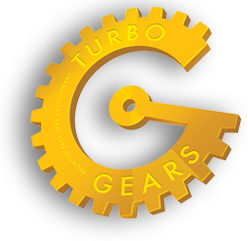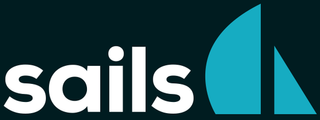
Model–view–controller (MVC) is a software design pattern commonly used for developing user interfaces that divides the related program logic into three interconnected elements. These elements are :

JSP Model 2 is a complex design pattern used in the design of Java Web applications which separates the display of content from the logic used to obtain and manipulate the content. Since Model 2 drives a separation between logic and display, it is usually associated with the model–view–controller (MVC) paradigm. While the exact form of the MVC "Model" was never specified by the Model 2 design, a number of publications recommend a formalized layer to contain MVC Model code. The Java BluePrints, for example, originally recommended using EJBs to encapsulate the MVC Model.

Ruby on Rails is a server-side web application framework written in Ruby under the MIT License. Rails is a model–view–controller (MVC) framework, providing default structures for a database, a web service, and web pages. It encourages and facilitates the use of web standards such as JSON or XML for data transfer and HTML, CSS and JavaScript for user interfacing. In addition to MVC, Rails emphasizes the use of other well-known software engineering patterns and paradigms, including convention over configuration (CoC), don't repeat yourself (DRY), and the active record pattern.
A web framework (WF) or web application framework (WAF) is a software framework that is designed to support the development of web applications including web services, web resources, and web APIs. Web frameworks provide a standard way to build and deploy web applications on the World Wide Web. Web frameworks aim to automate the overhead associated with common activities performed in web development. For example, many web frameworks provide libraries for database access, templating frameworks, and session management, and they often promote code reuse. Although they often target development of dynamic web sites, they are also applicable to static websites.

Catalyst is an open-source web application framework written in Perl. It closely follows the model–view–controller (MVC) architecture and supports a number of experimental web patterns. It is written using Moose, a modern object system for Perl. Its design is heavily inspired by frameworks such as Ruby on Rails, Maypole, and Spring.

TurboGears is a Python web application framework consisting of several WSGI components such as WebOb, SQLAlchemy, Kajiki template language and Repoze.
The Spring Framework is an application framework and inversion of control container for the Java platform. The framework's core features can be used by any Java application, but there are extensions for building web applications on top of the Java EE platform. The framework does not impose any specific programming model.. The framework has become popular in the Java community as an addition to the Enterprise JavaBeans (EJB) model. The Spring Framework is free and open source software.
Grails is an open source web application framework that uses the Apache Groovy programming language. It is intended to be a high-productivity framework by following the "coding by convention" paradigm, providing a stand-alone development environment and hiding much of the configuration detail from the developer.
Scaffolding, as used in computing, refers to one of two techniques:
Convention over configuration is a software design paradigm used by software frameworks that attempts to decrease the number of decisions that a developer using the framework is required to make without necessarily losing flexibility and don't repeat yourself (DRY) principles.

Lift is a free and open-source web framework that is designed for the Scala programming language. It was originally created by David Pollak who was dissatisfied with certain aspects of the Ruby on Rails framework. Lift was launched as an open source project on 26 February 2007 under the Apache License 2.0. A commercially popular web platform often cited as being developed using Lift is Foursquare.
The front controller software design pattern is listed in several pattern catalogs and is related to the design of web applications. It is "a controller that handles all requests for a website," which is a useful structure for web application developers to achieve flexibility and reuse without code redundancy.
Griffon is an open source rich client platform framework which uses the Java, Apache Groovy, and/or Kotlin programming languages. Griffon is intended to be a high-productivity framework by rewarding use of the Model-View-Controller paradigm, providing a stand-alone development environment and hiding much of the configuration detail from the developer.
JBoss Developer Studio (JBDS) is a development environment created and currently developed by JBoss and Exadel.
Java view technologies and frameworks are web-based software libraries that provide the user interface, or "view-layer", of Java web applications. Such application frameworks are used for defining web pages and handling the HTTP requests (clicks) generated by those web pages. As a sub-category of web frameworks, view-layer frameworks often overlap to varying degrees with web frameworks that provide other functionality for Java web applications.

Spring Roo is an open-source software tool that uses convention-over-configuration principles to provide rapid application development of Java-based enterprise software. The resulting applications use common Java technologies such as Spring Framework, Java Persistence API, Thymeleaf, Apache Maven and AspectJ. Spring Roo is a member of the Spring portfolio of projects.
Canigó is the name chosen for the Java EE framework of the Generalitat de Catalunya.

Orange and Bronze (O&B) is a privately owned computer software development company based in the Philippines. The company delivers software consulting, product engineering, and IT training services with a focus on Java software development. O&B specializes in developing and deploying web applications using Java-based frameworks and technologies such as Spring (framework), Grails (framework), Hibernate (Java), Google Maps API, Google App Engine, and Android.

Sails.js is a model–view–controller (MVC) web application framework developed atop the Node.js environment, released as free and open-source software under the MIT License. It is designed for Node.js web applications and APIs with similar architecture to Ruby on Rails.









